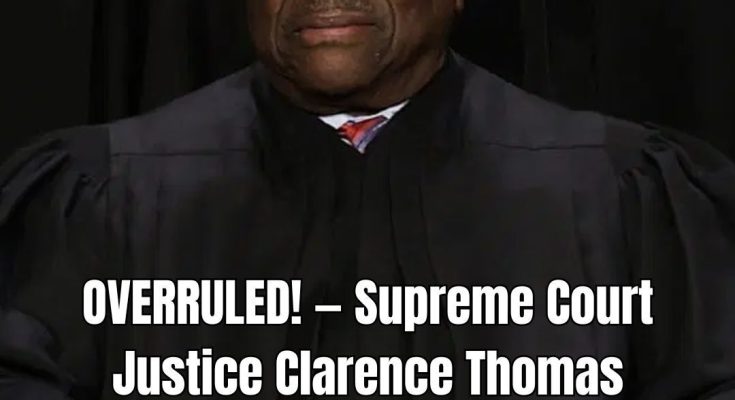 Justice Clarence Thomas defended the Supreme Court’s practice of overturning precedent during a recent appearance at Catholic University Law School.
Justice Clarence Thomas defended the Supreme Court’s practice of overturning precedent during a recent appearance at Catholic University Law School.Thomas, appointed to the court by President George H.W. Bush and now serving his 34th year, said justices cannot “turn off their brains” when evaluating cases.
He compared the principle of stare decisis — the reliance on prior rulings to guide legal decisions — to a train, with each case adding another car to the chain, the Washington Times reported.
“It’s not some sort of automatic deal where you can just say, ‘Stare decisis,’ and then turn off the brain,” Justice Thomas said during a Thursday evening event. “We never go to the front to see who’s driving the train or where it is going, and you could go up there to the engine room and find out it’s an orangutan.”
He went on to say that precedent isn’t written in stone.
“I don’t think that I have the gospel, that any of these cases that have been decided are the gospel, and I do give perspective to the precedent,” Thomas said. “But it should. The precedent should be respectful of our legal tradition and our country and our laws, and be based on something, not just something somebody dreamt up and others went along with.”
In recent years, the Supreme Court has drawn significant attention for overturning landmark precedents. In Dobbs v. Jackson Women’s Health Organization (2022), the justices reversed Roe v. Wade, the 1973 decision that recognized a national right to abortion, sending the issue back to states for them to decide individually, which was where it had been since the founding of the country.
Since then, more than a dozen Republican-led states have enacted bans on the procedure.
The Court also struck down the use of affirmative action in college admissions in Students for Fair Admissions v. Harvard and Students for Fair Admissions v. University of North Carolina, ending a decades-long practice that allowed institutions to consider racial diversity as a factor.
In another major shift, the Court overturned the doctrine of Chevron deference, which for decades had directed judges to defer to federal agencies’ rulemaking authority.
Looking ahead, the justices have agreed to revisit Humphrey’s Executor v. United States, a 1935 decision that limited a president’s ability to remove officials at independent agencies.
The conservative majority has already signaled a willingness to revisit the precedent, allowing President Trump in recent months to dismiss members of the Federal Trade Commission, the Merit Systems Protection Board, the National Labor Relations Board, and the Consumer Product Safety Commission.
Earlier this week, the Supreme Court blocked President Donald Trump on Wednesday from firing Democratic Federal Reserve Governor Lisa Cook.
The nation’s highest court will allow Cook to remain in her seat until oral arguments begin in January 2026.
The high court’s decision came months after most of the justices seemed to protect the Fed by calling it a “uniquely structured” entity with a “distinct historical tradition” that kept it out of presidential politics. This was even though the court has let Trump fire leaders at other agencies, like the Federal Trade Commission.
In late August, Trump fired Cook after a member of his staff said she had committed mortgage fraud by claiming two different properties as her main residence, which can lead to better credit conditions.
Cook is facing mounting allegations of mortgage fraud after federal housing regulators issued criminal referrals over discrepancies in her property filings.
CNN acknowledged the seriousness of the case Friday, with legal analyst Elie Honig saying the suspicious activity was “really problematic” for Cook, the Daily Caller reported.
Bill Pulte, the head of the U.S. Federal Housing Agency, confirmed that a second criminal referral has now been filed.
He alleges Cook misrepresented a condominium in Cambridge, Massachusetts, when she claimed it was a “second home” on a 2021 mortgage application, then listed it as an “investment/rental property” on a government ethics form eight months later.


